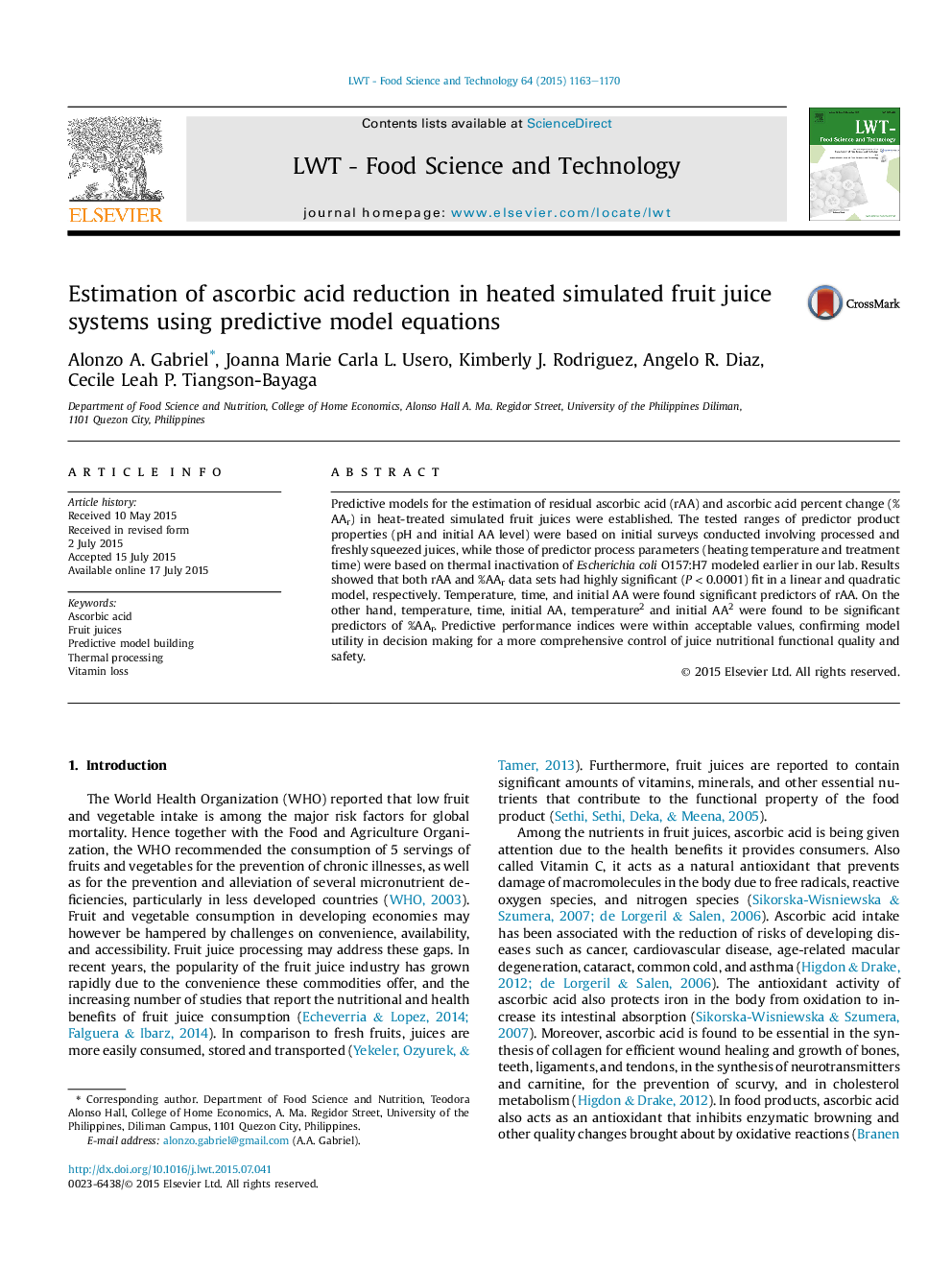| Article ID | Journal | Published Year | Pages | File Type |
|---|---|---|---|---|
| 6401943 | LWT - Food Science and Technology | 2015 | 8 Pages |
â¢Significant models for estimating ascorbic acid degradation were established.â¢Temperature, time, and initial ascorbic acid content were significant predictors.â¢Validation showed acceptable predictive efficacy of the models.â¢Validation confirmed utility of the models for product nutritional quality control.
Predictive models for the estimation of residual ascorbic acid (rAA) and ascorbic acid percent change (%AAr) in heat-treated simulated fruit juices were established. The tested ranges of predictor product properties (pH and initial AA level) were based on initial surveys conducted involving processed and freshly squeezed juices, while those of predictor process parameters (heating temperature and treatment time) were based on thermal inactivation of Escherichia coli O157:H7 modeled earlier in our lab. Results showed that both rAA and %AAr data sets had highly significant (PÂ <Â 0.0001) fit in a linear and quadratic model, respectively. Temperature, time, and initial AA were found significant predictors of rAA. On the other hand, temperature, time, initial AA, temperature2 and initial AA2 were found to be significant predictors of %AAr. Predictive performance indices were within acceptable values, confirming model utility in decision making for a more comprehensive control of juice nutritional functional quality and safety.
